By Justin Cresser
As your players advance and begin to play at higher levels, they will need some degree of Functional or Position-specific Soccer training. For example, wingers need to be good dribblers and crossers of the ball and should therefore devote time to perfecting these skills. In a similar fashion, central defenders need to be strong in the air and proficient in 1 v 1 situations. The same is true for conditioning. Players in the various positions will have specific conditioning needs and coaches should allocate some time to developing position-specific fitness needs.
Most of the exercises we present on this website are general fitness exercises, in that; they are suitable for every player on the team, regardless of position. This week and every so often however, we will look at position-specific conditioning exercises. Today’s activity is geared towards the central midfielder, but strikers and wingers can also benefit from the drill.
Center mids are often called upon to create space between themselves and their marker, check back to receive a pass played to their feet and in one motion, turn and attack the space in front of them. This sequence of movements is frequently seen with passing midfielders that play in front of the back four, such as Real Madrid’s Xavi Alonso, and requires good agility as well as proper turning and receiving technique.
Divide your players into groups of two. For each pair, set up 3 cones 12 yards apart in a straight line. Have yours players stand at each of the end cones facing each other. One of them should have a ball at their feet (Figure 1).
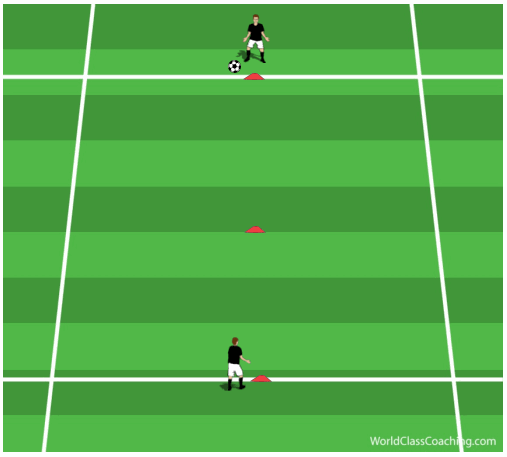
When ready, the player without the ball will run to the right of the cone in the centre. When they reach midway between this cone and their starting position, they will cut to the left and accelerate as quickly as possible to the left of the middle cone. As soon they make the cut, their partner should play a firm pass for them to run unto, slightly to the left of the centre cone (Figure 2).
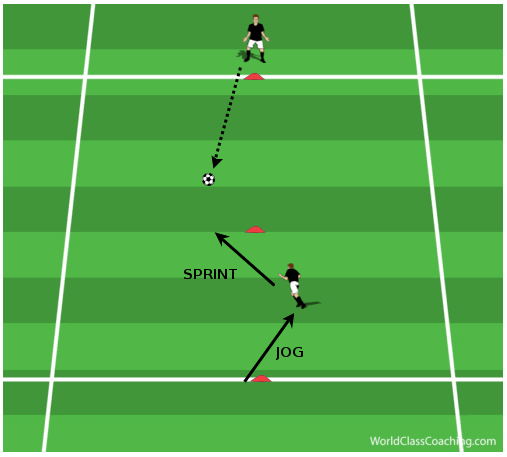
As they are about to receive the ball, the player must perform a half (180-degree) turn so that they are facing the opposite direction (away from their partner) with their first touch (Figure 3).
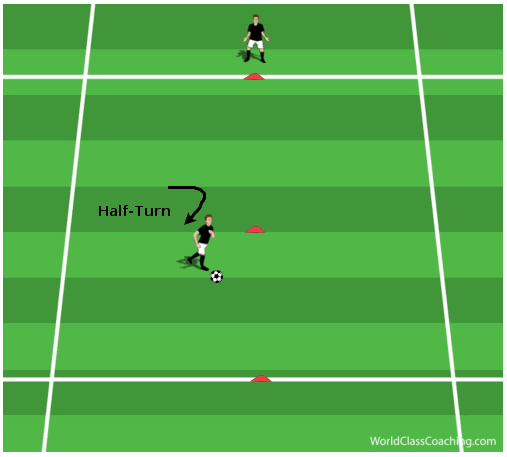
As soon as they turn, they must dribble as quickly as possible, but under control, to the cone marking their initial starting position (Figure 4).
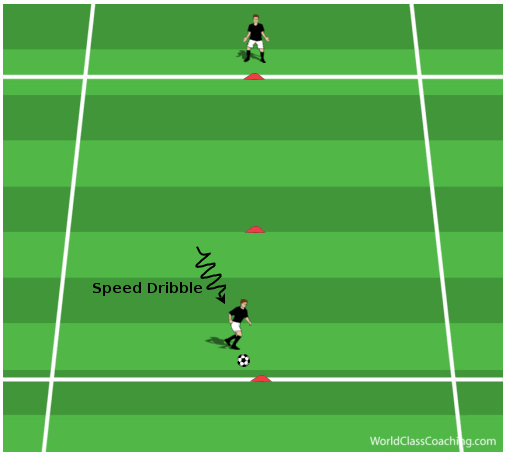
As they reach the cone, their partner will then perform the same sequence (Figure 5).
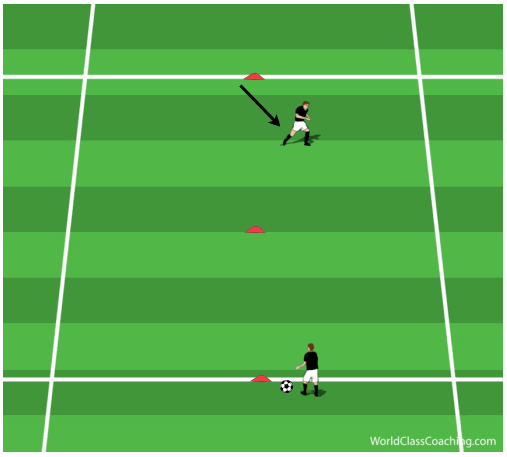
Continue this sequence for 90 seconds and then have the players rest for two minutes. Perform a total of four to six 90-second repetitions. This work-to-rest ratio also helps develop the anaerobic capacity of the players, which is essential for central midfielders who perform the most amounts of high-intensity actions per game.
Have the players perform the exercise slowly at first, so that they get comfortable with the turning and cutting technique, and them have them perform it as quickly as possible. You should also have the players start by jogging to the left and then cutting to the right.
Coaching Points:
- When cutting to the left, the player should plant the right foot wide and parallel to the body so that it lands outside of the knee. This foot (right) then forcefully drives the body in the intended direction.
- After the cut, they should accelerate as quickly as possible towards the pass using short, powerful steps while maintaining good posture (slight forward lean)
- As the player is about to receive the ball, they should pivot on the front foot and turn by opening the hips on the other side. This will allow them to receive the ball on the back foot and face forward.
- As soon as they face forward they should dribble as quickly as possible using the laces or outside of the foot
Best of luck,
Justin
Justin Cresser – Has coached soccer at various levels both in North America and abroad (Hong Kong and Africa). His most recent position was as the Assistant Technical Director at the Soccer Club of Toronto. He has his National Diploma from the NSCAA and is also a certified strength and conditioning coach.


